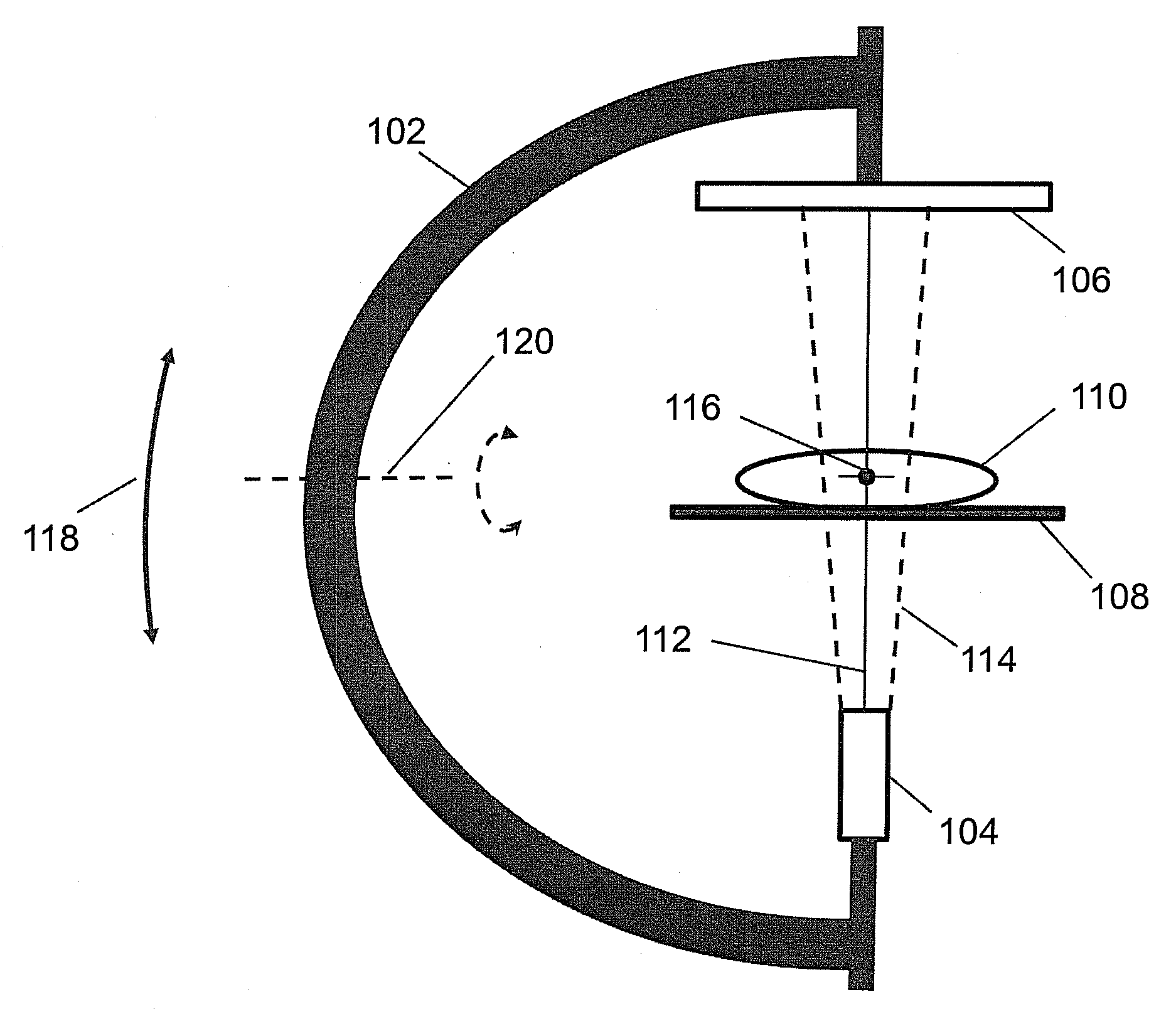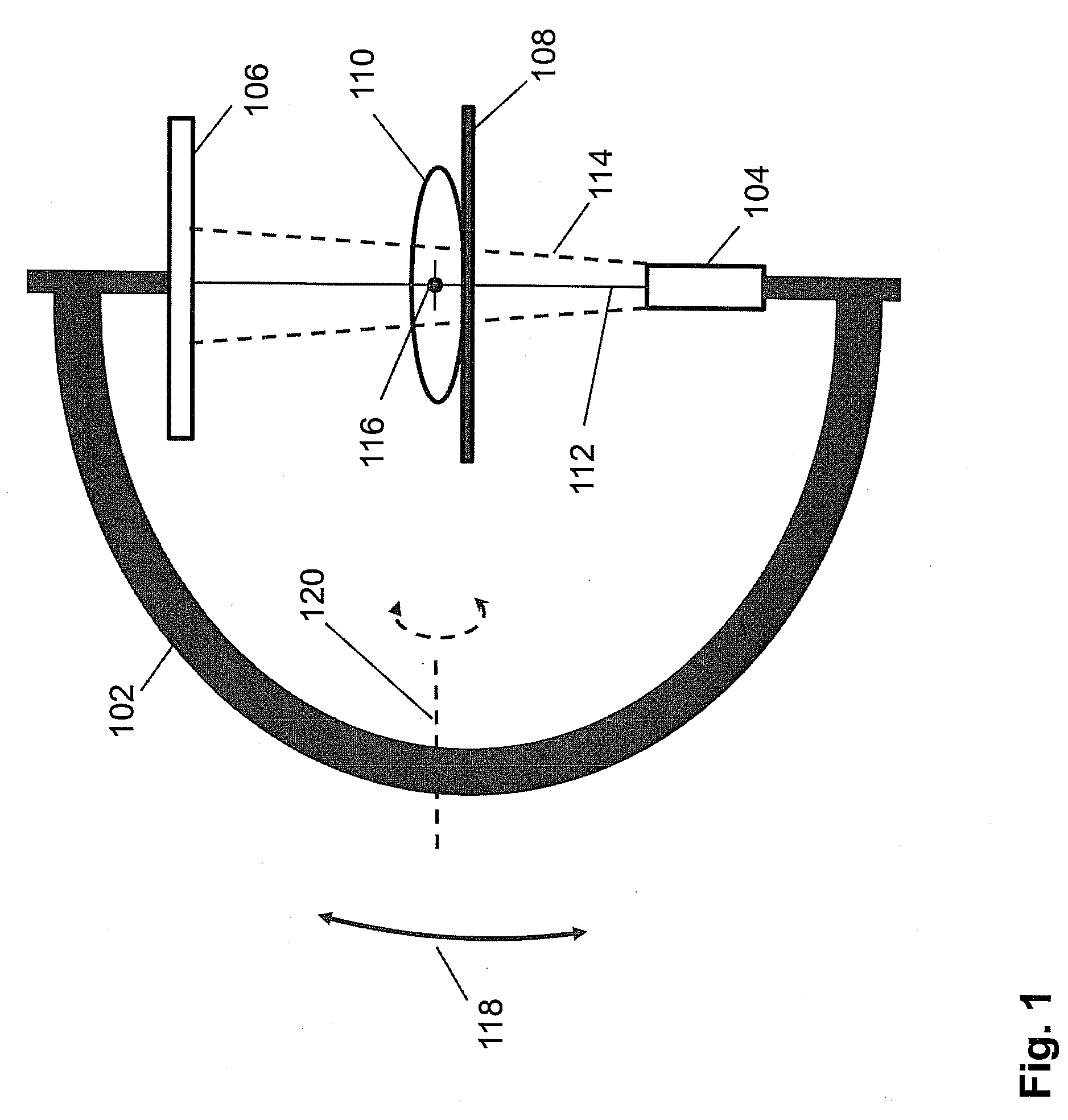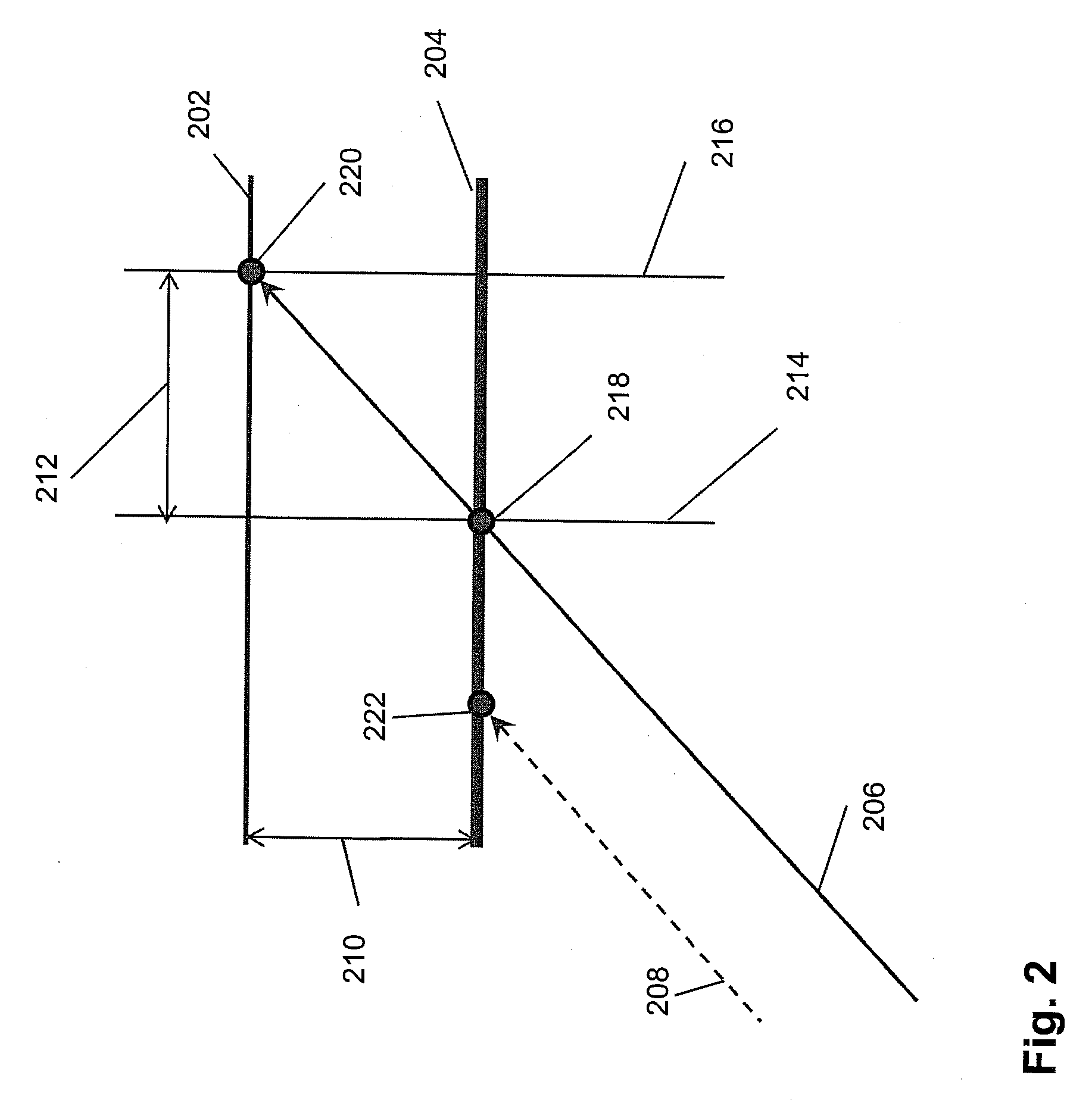Needle Guidance With a Dual-Headed Laser
a laser and needle guidance technology, applied in the field of interventional radiology, can solve the problems of prior-art methods that may not provide proper precision and require a complicated sequence of steps
- Summary
- Abstract
- Description
- Claims
- Application Information
AI Technical Summary
Problems solved by technology
Method used
Image
Examples
second embodiment
[0030]FIG. 4 shows a flowchart of a prior-art “bulls-eye view” method. This method is simpler because a needle is not used for initial positioning and alignment of the laser beam. Steps 402-410 are similar to steps 302-310. First, in step 402, the patient 110 is positioned in the C-arm 102. In step 404, a 3-D image of the patient is rendered from a previously acquired 3-D volume dataset and displayed on a monitor. In step 406, the positions of the target and skin entry point are marked on the display with graphical markers. In step 408, the target is aligned with the isocenter 116. In step 410, the axial ray 112, skin entry point, target, and center pixel of the detector 106 are aligned.
[0031]In step 412, a mechanical guide is installed over the center pixel of the detector 106. In step 414, a single-headed laser, which may be mounted on a mechanical arm, is positioned in the mechanical guide. The mechanical guide centers the axis of the laser beam over the center pixel of the detec...
third embodiment
[0038]The adjustment mechanism for aiming the beams comprises mechanical arm 532 described above. In one embodiment, mechanical arm 532 is adjusted manually. In another embodiment, the mechanical arm 532 is mounted on a stage which may be adjusted mechanically or electromechanically. In a third embodiment, the mechanical arm 532 may be a computer-controlled robotic arm.
[0039]In practice, axes which are desired to be ideally collinear may not be truly collinear. Deviations from true collinearity, for example, may arise from manufacturing tolerances which may affect the collinearity of collimated beam 522 and collimated beam 524. Deviations from true collinearity, for example, may also arise from the precision in which mechanical arm 532 may be adjusted. The precision may affect the collinearity of collimated beam522 and needle trajectory 508. Herein, “collinear” axes refer to “substantially collinear” axes. Two axes are “substantially collinear” if the deviation from true collinearit...
PUM
 Login to View More
Login to View More Abstract
Description
Claims
Application Information
 Login to View More
Login to View More - R&D
- Intellectual Property
- Life Sciences
- Materials
- Tech Scout
- Unparalleled Data Quality
- Higher Quality Content
- 60% Fewer Hallucinations
Browse by: Latest US Patents, China's latest patents, Technical Efficacy Thesaurus, Application Domain, Technology Topic, Popular Technical Reports.
© 2025 PatSnap. All rights reserved.Legal|Privacy policy|Modern Slavery Act Transparency Statement|Sitemap|About US| Contact US: help@patsnap.com



